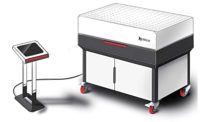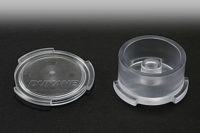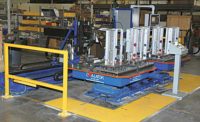The basics of orbital welding

Welding may be the most effective and structurally sound way to connect metal parts, but certain applications can pose a challenge. Circular parts, such as pipes and tubes, require a consistent weld that can be challenging weld to accomplish manually. Orbital welding is a semiautomatic process that allows for a quality weld of rounded parts by rotating around the static part.
The welding instrument moves around the outer circumference of the part while welding, explains Mathew Eaton, vice president of sales and marketing at Magnatec. Orbital welding is a type of fusion welding and uses the same technology as traditional gas tungsten arc welding (GTAW). Orbital welds are made using a tungsten heat source to create the welds. Like GTAW, orbital welding systems include three basic parts: the welding head, the power source and the cooling system.
Unlike a manual weld, the orbital weld head connects around the tube to create the weld. While the weld heads look different, the welds are still created by the tungsten electrode with a shielding gas to protect the weld. The weld head’s housing and collets allow the head to rotate around the tube.
“The actual weld is no different than a manual weld,” notes Eaton. “The difference is that orbital welding can be auto-programmed for consistent, repeatable results.”
Another major difference is the power source. Orbital welding is a semiautomatic process that is controlled by a computer. The user inputs basic parameters—diameter, material and wall thickness—and the machine generates the welding parameters, says Eaton.
The main benefit of orbital welding, according to Eaton is the quality of the weld. Because this method removes the human element, users can expect consistent repeatable weld output.
The size and material of the tube or product to be welded depends on the application, however most materials that can be welded manually can be welded with an orbital welding system. Each industry dictates the required materials as well as the standard welding codes and procedures that must be followed. Eaton offers an aerospace fuel line as an example. This line may need to withstand expansion, corrosive materials and extreme temperatures, which means the weld will need to as well.
The diameter of the tubing is dictated by the application as well. This requires specifically sized weld heads and collets. Eaton also recommends looking at the area around the tube being welded, to ensure that the dimensions of the orbital weld head will be appropriate. The Magnatec 800 Series can accommodate a range of diameters and offers multiple weld head dimensions for tight spaces.
There are a number of variables that can impact the orbital welding process. The appropriate shielding gas should be chosen to prevent oxygen from damaging the weld. These gases are generally determined by the material being welded, as well as the specific application of the product. The type of tungsten electrode used can cause erosion if not chosen correctly.
The cleanliness of the material can hinder the weld as well. Oils and dirt can compromise the weld, which can have serious consequences. These compromising variables are more or less the same as the variables that can impair a manual weld.
When looking to implement an orbital welding system, Eaton suggests working with a supplier that can provide a weld head that best fits the application. Find an orbital weld head that can accommodate the range of diameters for your application and build the system from there.
Looking for a reprint of this article?
From high-res PDFs to custom plaques, order your copy today!





